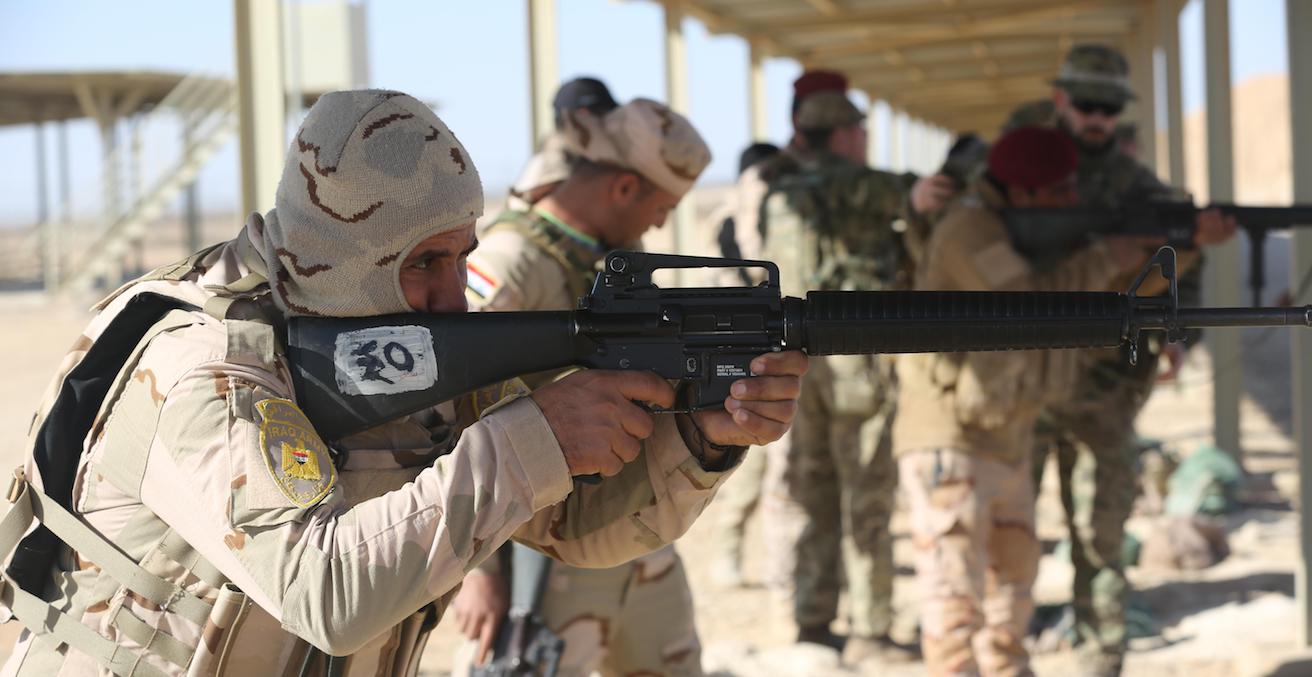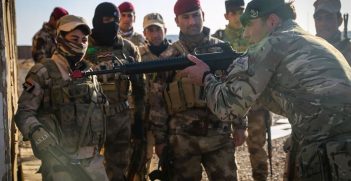Jihadists Under One Flag?

As the Syrian civil war is raging on into its seventh year, the power of jihadist groups is declining. As each of these terrorist groups face existential irrelevancy, the possibility of them joining forces to make one last stand should not be ignored.
The Syrian civil war is raging on into its seventh bloody year, with thousands of civilians either killed or displaced as numerous internal groups grapple for power and control. The conflict has been further complicated by the actions of several external actors, including the US and Russia who many believe to be engaged in a proxy war against each other under the façade of ‘fighting terrorism’.
Despite the convolution, one thing is becoming clear: the power of jihadist groups in Syria is declining. The two most powerful jihadist groups in the conflict, Islamic State (IS) and al-Qaeda, have lost much of the ground they had once gained in the Middle East. IS has been decimated, being routed from all the major cities it once controlled in Iraq. In Syria, al-Qaeda is fighting against a coalition of Syrian government forces and support groups that are using the current momentum to sweep through Syria and restore government influence and control.
As each of these terrorist groups face existential irrelevancy, the possibility of their joining forces to make one last stand cannot, and should not, be ignored. There is the potential for a faltering jihadist insurgency to develop into a more irregular guerrilla warfare campaign, thereby undermining Syrian government authority and the security of the international community in the future.
Divided they stood
IS and al-Qaeda have a strong history together, originating from the US-led invasion of Iraq in 2003, where al-Qaeda in Iraq fought an insurgency against the Iraqi government and the US-led occupation. In 2006, al-Qaeda in Iraq merged with five other militant groups and rebranded as the Islamic State in Iraq, later expanding operations into Syria in the wake of the Arab Spring uprising of 2010.
This alliance has been largely built on strategy and convenience. Each group has many franchises or wilayats around the world, operating cooperatively and in opposition with each other as they compete for territory and resources. In the case of these two groups, cooperation is regionally based and a product of the condition on the ground, and thus often short-lived.
Initially, from 2011-2013, the two groups carved out large pieces of Iraq and Syria as a unified entity, benefitting from combined resources and campaigns to carry out various operations. This included the ‘Breaking the Walls’ campaign of 2013, which saw many jihadists broken out of jails across Syria and Iraq.
However, although there have been various instances of unity, IS and al-Qaeda have hitherto remained two distinctly different jihadi groups. A major point of contention between the two has been the extreme acts of IS. Al-Qaeda does not condone IS’ attacks on other Muslims and has criticised IS’ refusal to accept reconciliation and arbitration with other jihadi groups.
United they will fall?
Undoubtedly, a joint or cooperative jihadist force of al-Qaeda in Syria and IS could mean a doubling of forces and manpower for the combined group. The groups could share heavy weaponry including tanks, armoured personnel carriers and anti-aircraft guns, as well as sharing precious intelligence and learning unconventional tactics.
Despite recent clashes between the two groups in the Syrian province of Hama, it is a distinct possibility that these groups will overlook their differences to ensure their survival. Indeed, Iraqi Vice President Ayad Allawi recently announced that he had received intelligence that there are discussions between messengers of Abu Bakr al-Baghdadi and al-Qaeda leader Ayman al-Zawahiri, revealing that the two groups are in talks.
The movement of militants and the flow of fighters under a unified banner would mean increased jihadists moving across Syria, as recently illustrated by the migration of a large group of Liwa al-Aqsa fighters who, after participating in rebel infighting, moved from the al-Qaeda dominated Idlib province to Raqqa to join with IS.
Syria’s future
For the US-led international coalition (in which Australia plays a prominent role, flying its own air sorties and combat missions), a jihadi coalition could seriously change the momentum of the current campaign to erode the groups’ capabilities. This could see a prolonging of Australia’s involvement in what is fast becoming a geo-political nightmare.
For the US-led international coalition and Russia, stability in the region can only emerge after extremism is eradicated, which will also contribute to the wider security of the international community.
As both jihadist groups face the prospect of being defeated in the strategic long-term, they will eventually have to decide whether their similarities are stronger than their differences. In this case, Assad, the US coalition and Russia may have the opportunity to hit two birds with one stone and finally dismantle both groups.
A post-jihadist Syria, if such an entity is possible, will allow for the Assad regime to consolidate its battlefield victories into stabilisation projects.
Matthew Wilson is an International Relations Masters student with a strong interest in national security, intelligence and strategy. His research interests are in US foreign policy and transnational terrorism.
This is an edited extract of an article titled “Looking Into: Jihadists Under One Flag?” published in Volume 11, Issue 1 of Quarterly Access, the national publication of the youth networks of the AIIA.
This article is published under a Creative Commons Licence and can be republished with attribution.





